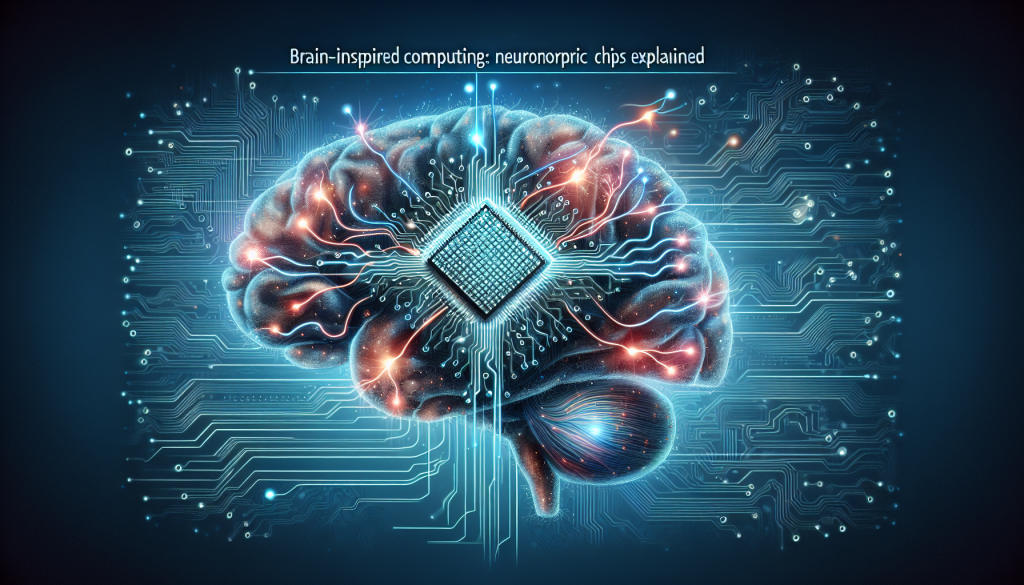
Brain-Inspired Computing: Neuromorphic Chips Explained
Brain-Inspired Computing: Neuromorphic Chips Explained
As technology continues to rapidly advance, scientists and engineers are constantly seeking to develop more efficient and intelligent computing systems. One avenue of exploration that has gained significant traction in recent years is brain-inspired computing, also known as neuromorphic computing. This emerging field aims to mimic the structure and function of the human brain in order to create more powerful and efficient computers. In this article, we will delve into the world of neuromorphic chips and explore how they are revolutionizing the way we think about computing.
The Brain-Inspired Concept
The human brain is an incredibly complex and powerful organ that is responsible for our ability to think, learn, and adapt. Unlike traditional computers, which are based on the Von Neumann architecture, the brain operates in a highly parallel and distributed manner. This means that tasks are not divided into small sequential steps, but rather, many processes are carried out simultaneously. Neuromorphic computing seeks to replicate this neural network structure in the form of chips, which can process information in a more brain-like manner.
Introducing Neuromorphic Chips
At its core, a neuromorphic chip is a specialized type of processor that is designed to mimic the functions of the human brain. These chips are made up of thousands or even millions of individual neurons, which are connected in a complex network. Just like in the brain, each neuron is responsible for processing and passing on information to other neurons. The neurons are also capable of learning and adapting, making them more efficient and versatile than traditional processors.
How Do They Work?
Neuromorphic chips rely on two key concepts to operate: spiking neurons and synaptic plasticity. Spiking neurons are a type of artificial neuron that can measure the electrical signals received from other neurons and fire their own signals in response. This allows for rapid communication and processing of information. Synaptic plasticity, on the other hand, refers to the ability of the neurons to adapt and change their connections based on experience, just like the brain.
The Benefits of Neuromorphic Computing
So why are scientists and engineers so excited about neuromorphic chips? One of the most significant benefits is their potential for energy efficiency. The human brain is incredibly powerful, yet it only consumes around 20 watts of power. In contrast, traditional computers require hundreds of watts to perform similar tasks. Neuromorphic chips, on the other hand, can carry out complex computations with significantly less power, making them ideal for applications that require low energy consumption.
Another advantage of neuromorphic computing is its potential for real-time processing. The brain is constantly processing information and making split-second decisions, and neuromorphic chips aim to replicate this capability. This makes them ideal for tasks that require immediate responses, such as autonomous vehicles or medical devices.
The Future of Brain-Inspired Computing
The field of neuromorphic computing is still in its early stages, but the potential for this technology is immense. Researchers are working on developing more advanced and efficient neuromorphic chips, while also exploring their potential applications in various industries. As we continue to unravel the mysteries of the human brain, we may see even more advanced and sophisticated neuromorphic chips in the future.
In Conclusion
Brain-inspired computing through the use of neuromorphic chips is a fascinating and promising area of research. By mimicking the structure and function of the human brain, these chips have the potential to revolutionize the way we think about computing. With their energy efficiency, real-time processing capabilities, and potential for advanced applications, it’s safe to say that the future looks bright for neuromorphic computing.
Whether you’re a technology enthusiast, a researcher, or simply curious about the latest advancements in computing, keep an eye on the field of neuromorphic chips – the next big thing in the world of brain-inspired computing.
